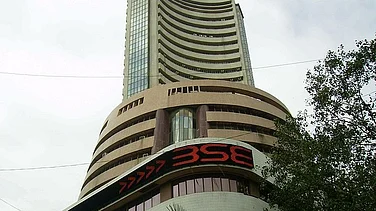After going through a period of downturn in the year thus far, Brent crude prices have recently seen an uptick in prices, surging 4% in the last session to top the $70-mark. That’s the biggest single day gain since October last year, one that has taken oil prices to their highest level in around two months.
The upmove was fired up by US President Trump’s announcement of pulling out US personnel out of the Middle East which evoked fears of intensifying tensions in the Middle East. Trump on Wednesday said US personnel were being moved out of the Middle East because “it could be a dangerous place,” adding that the US would not allow Iran to have a nuclear weapon.
Sending further shockwaves, Iran’s Minister of Defense Aziz Nasirzadeh also threatened to strike US bases in the region if nuclear talks between the two nations fallout, giving way to conflict-like conditions with Washington. Matching the offensive, Trump has also repeatedly threatened Iran with bombing if it does not reach a new nuclear deal.
Meanwhile, media reports had also suggested that the US was prepping up for a partial evacuation of its Iraqi embassy. Given that Iraq is the second biggest oil producer in the OPEC, any geopolitical flare up involving the region threatens to disrupt the supply of the commodity.
Adding another sliver of positive triggers for oil has been the developments around the US-China trade deal, which has also sparked hopes of some demand revival.
However, analysts are not yet convinced over the sustenance of this rally, flagging that the upmove may be short-lived.
“Oil’s recent up move seems at odds with the outlook of surplus supplies. Globally soft demand, the petro-nations’ policy U-turn, and incremental growth from South America’s offshore platforms all point towards an oil market heading for abundance,” said Norbert Rücker, Head Economics and Next Generation Research, Julius Baer.
To that effect, Rucker further added that the OPEC’s pledge to lift production restrictions by more than one million barrels per day would already be sufficient on its own to meet expected global demand growth.
“On top of that, with incremental growth coming from the development of offshore resources in Brazil and Guyana, alongside the production growth witnessed elsewhere, should tip the market into a surplus later this year,” Rucker believes.
On that account, Rucker anticipates oil prices to moderate in the coming time, eventually easing towards $65 per barrel, which happens to be at the upper end of a fundamentally justified range as per his calculations.
Moroever, Rucker also warned against brewing expectations of rising oil demand as it has stood almost stagnant in recent times. The electrification of road transport and shift from oil- to gas-based feedstocks in petrochemical production are major drivers behind the stagnating demand.
“While this is particularly evident in China, electric vehicle sales have also regained momentum in Europe as of late,” he added.
Prathamesh Mallya, DVP- Research, Non-Agri Commodities and Currencies, Angel One, pointed another China factor that is weighing down on oil demand. “China has imposed tighter controls on rare earth exports which could disrupt the car production in those countries who import these rare earth commodities leading to escalation of tensions in the global world, impacting demand,” Mallya said.
Factoring these headwinds, marked primarily by increased supply, and geo-political turmoil, Mallya feels the environment is not ideal for oil prices to rally. “If the supply side eases further in the months ahead, the year 2025 will be an era of subdued oil prices,” he added.
































